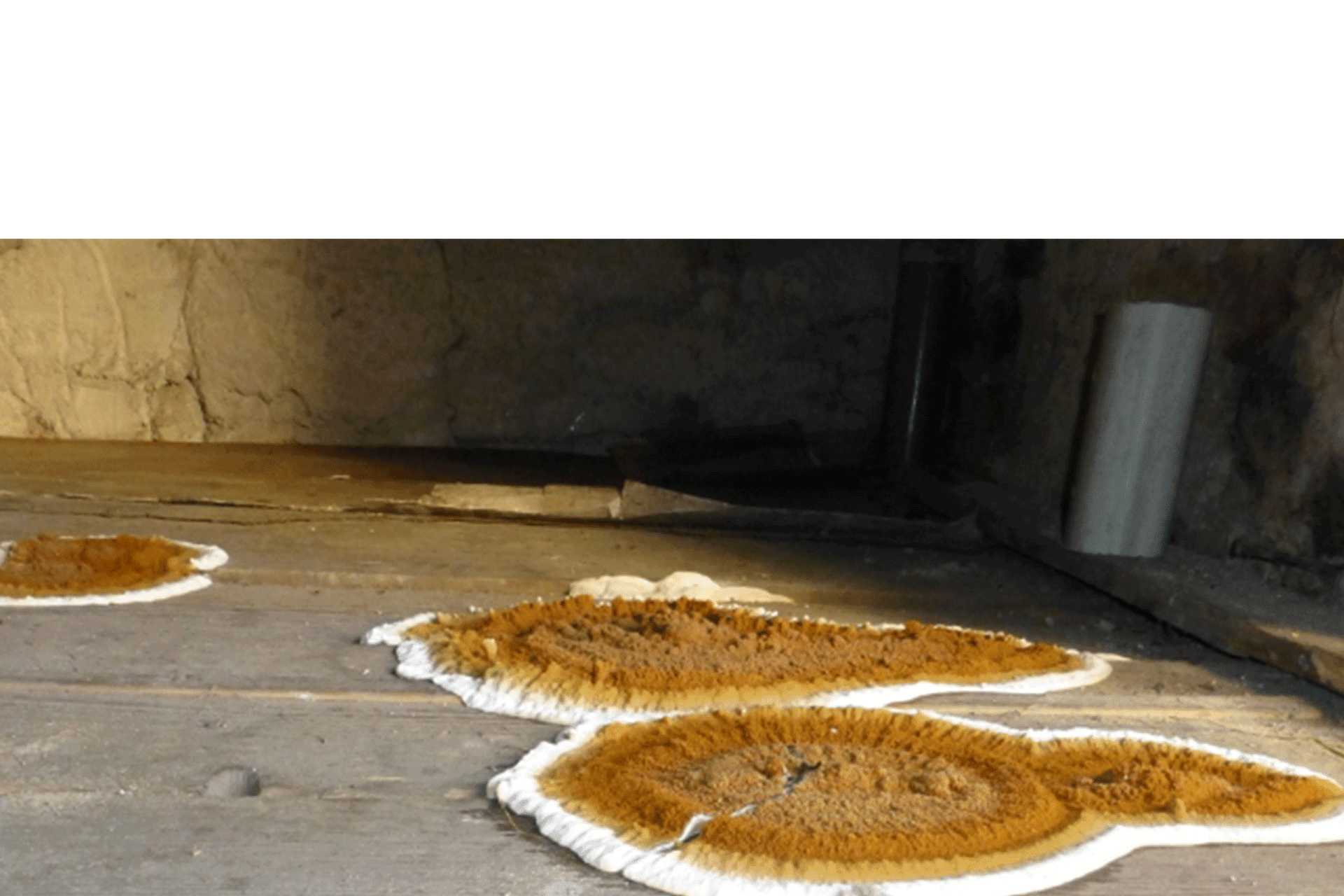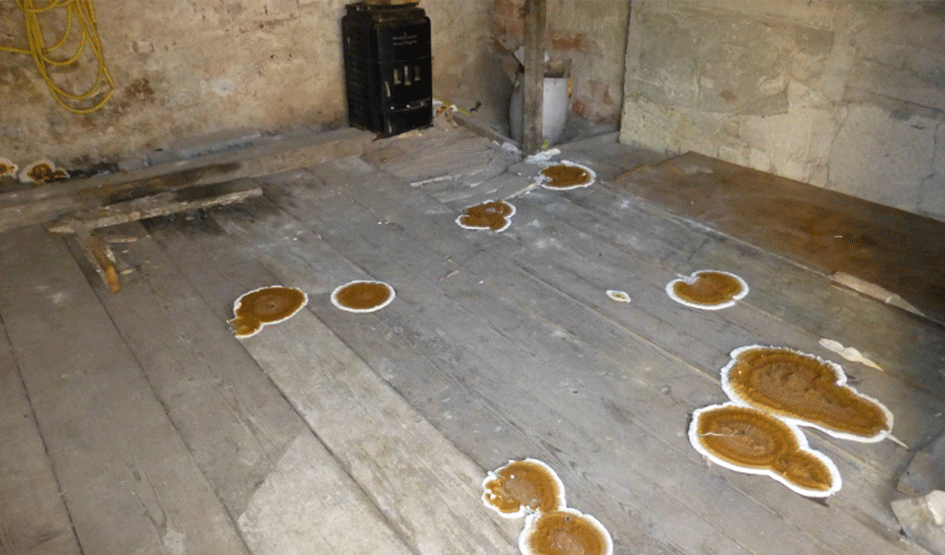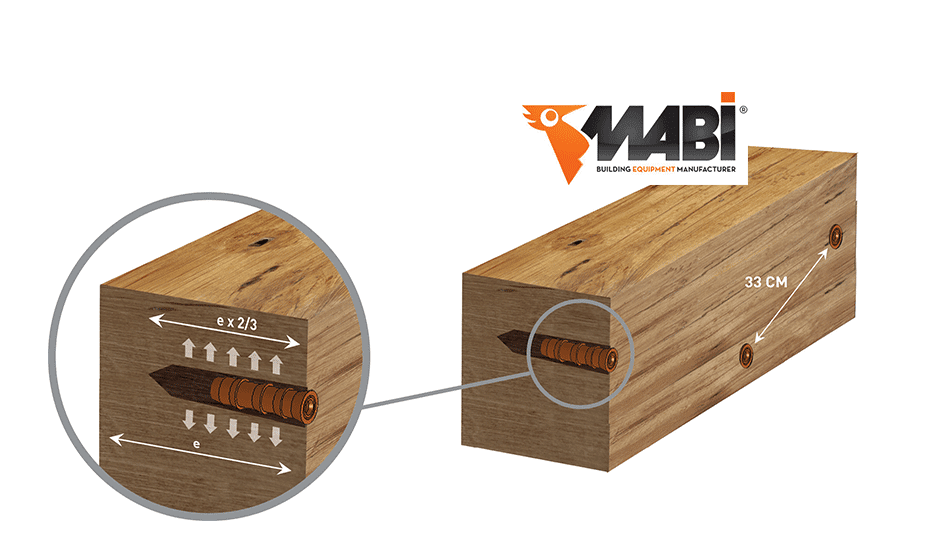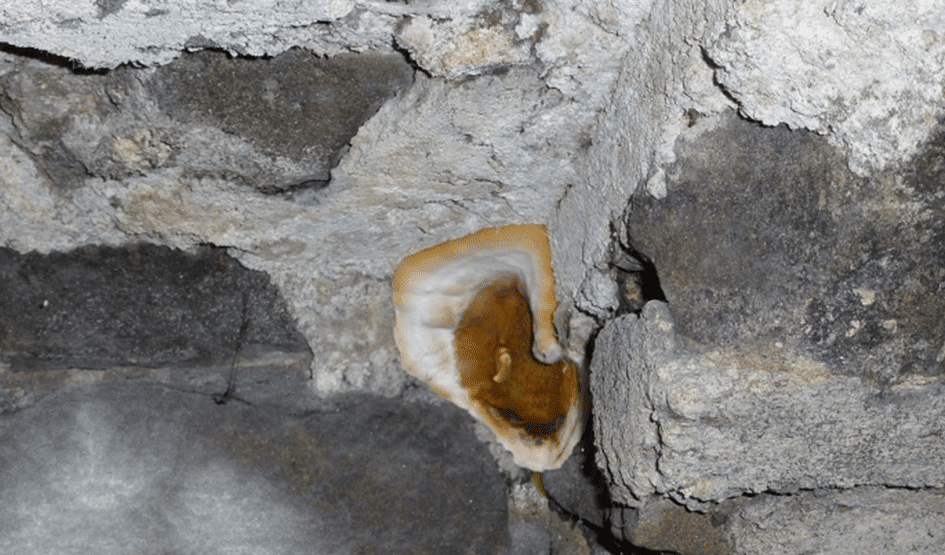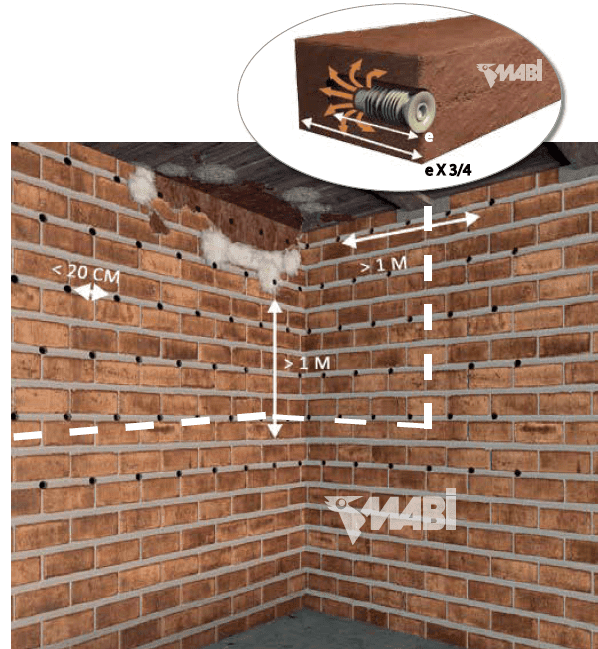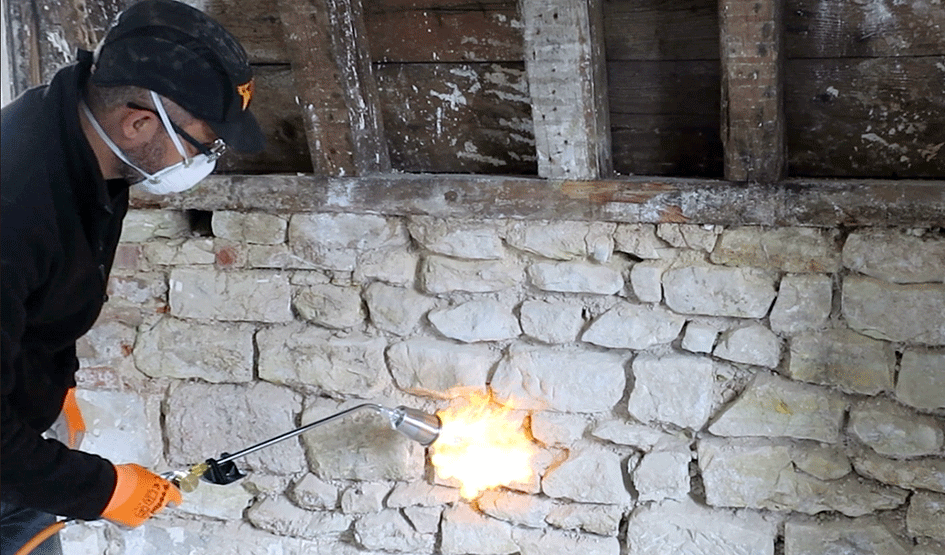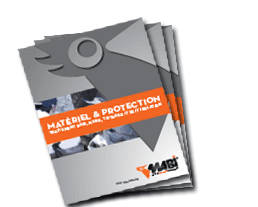Dry rot treatment
It is a very destructive fungus! The dry rot Serpula Lacrymans grows at high speed: up to 12 cm per week in a favorable environment!
What cause dry rot?
In buildings with moisture, wood destroying fungi can develop.
The most destructive fungus affecting converted timber in buildings is the dry rot Serpula Lacrymans, it grows at high speed: up to 12 cm per week with optimum conditions!
A high humidity rate (in excess of 20% moisture content), darkness and poor ventilation are the basis for the development of wood-destroying fungi, such as the Serpula lacrymans.
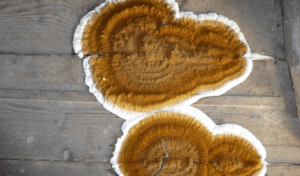
How to recognize dry rot?
Before starting any work, you must accurately identify the fungus with the help of mycology experts and fix the source of dampness, the root cause of its development.

How to treat dry rot?
Mark the contaminated area by the filaments and carry out the treatment to a minimum distance of one meter around the concerned area. Remove all coverings hiding the ground surface, ceiling, the masonry and the wood to protect, such as linoleum, carpets, parquet, fabrics, plasters and coatings. Then treat dry rot in timber and in masonry.
Eliminate dry rot fungi present in timber
What you need to get rid of dry rot Serpula Lacrymans in wood and timber:
- Wood drill bits
- Mabi injectors diameter 6.5 or 9.5mm (injection plug)
- Mabi pump with an injection tip and spray nozzle
- Fungicidal /wood preservative / biocide
- Personal Protective Equipment (PPE)
1/ Preparation
– Brush with a wire brush to remove the fungus‘ mycelium.
– Burn with a blowtorch the floors, walls and masonries, to destroy any Serpula Lacrymans parts: fruiting body, mycelial extension, etc.
– Remove the rubble, spraying it with fungicide to prevent new contamination.
2/ Treatment
– Drill in a grid pattern over the whole surface concerned, with holes spaced about 15 to 20cm in a staggered row on several lines and/or to both sides of the wall.
The depth of the injection holes should be the 3/4 of the total thickness of the wall.
– Set the injection packers into each drilled hole and inject the fungicide with your MABI pump.
– Spray the chemical to the whole of the area concerned.
The MABI injection packers allow an injection into the wall without backflow of chemical from the injected hole or the adjacent bore holes. The biocide chemical is where it should be, for a safe and effective dry rot treatment.
Eliminate dry rot fungi present in masonry
What you need to get rid of dry rot in masonries:
- Concrete drill bits
- Mabi injectors diameter 12, 14 or 18mm (injection packers)
- Mabi pump with an injection tip and spray nozzle
- Fungicidal / biocide
- Personal Protective Equipment (PPE)
1/ Preparation
– Brush with a wire brush to remove the fungus‘ mycelium.
– Burn with a blowtorch the floors, walls and masonries, to destroy any fungus parts: fruiting body, mycelial extension, etc.
– Remove the rubble, spraying it with fungicide to prevent new contamination.
2/ Treatement
– Drill in a grid pattern over the whole surface concerned, with holes spaced about 15 to 20cm in a staggered row on several lines and/or to both sides of the wall.
The depth of the injection holes should be the 3/4 of the total thickness of the wall.
– Set the injectors into each drilled hole and inject the fungicide with your MABI pump.
– Spray the chemical to the whole of the area concerned.
The methods are given for information purposes only.
Always refer to the local legislation and to the chemical manufacturer’s label before starting any job.
Always wear the Personal Protective Equipment (PPE) required and officially approved for chemical handling, including gloves, coverall, respirator and protective eyewear.

